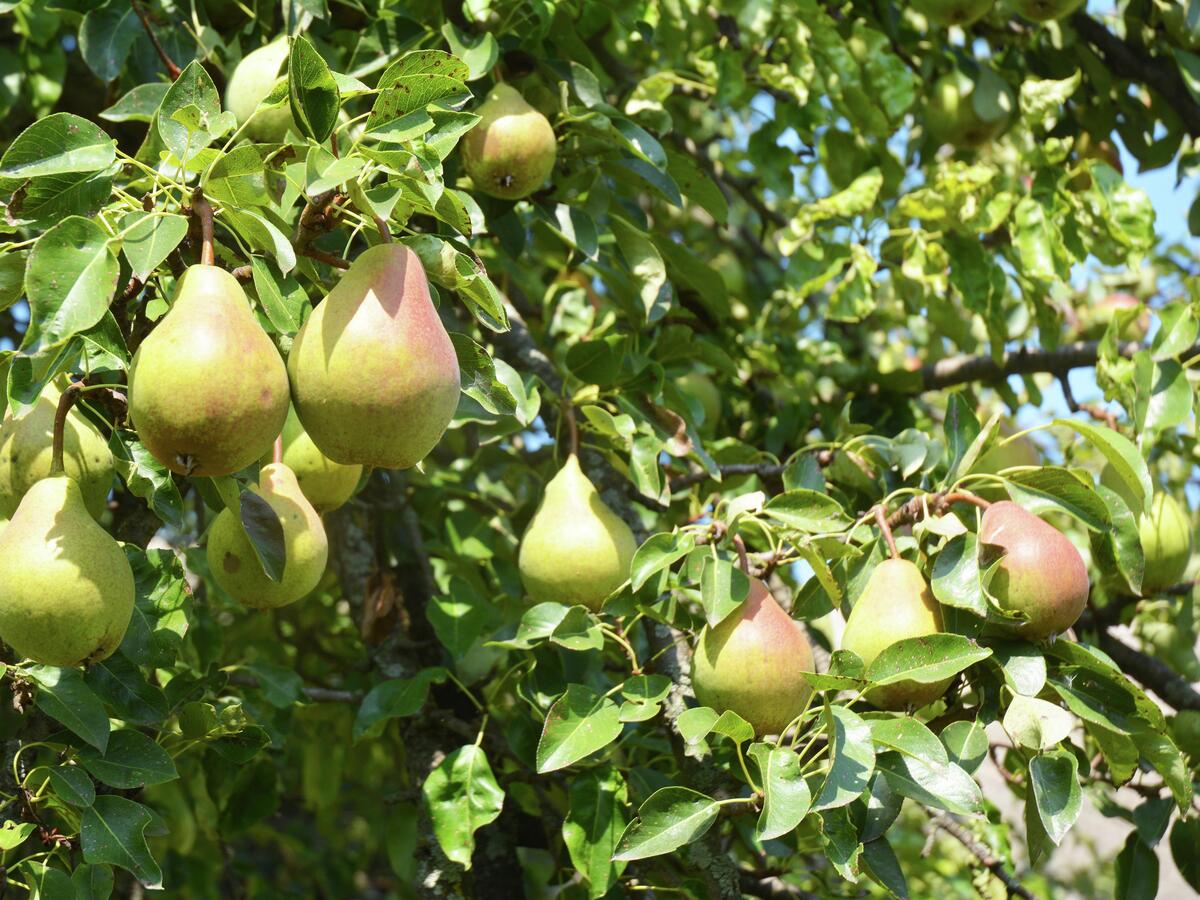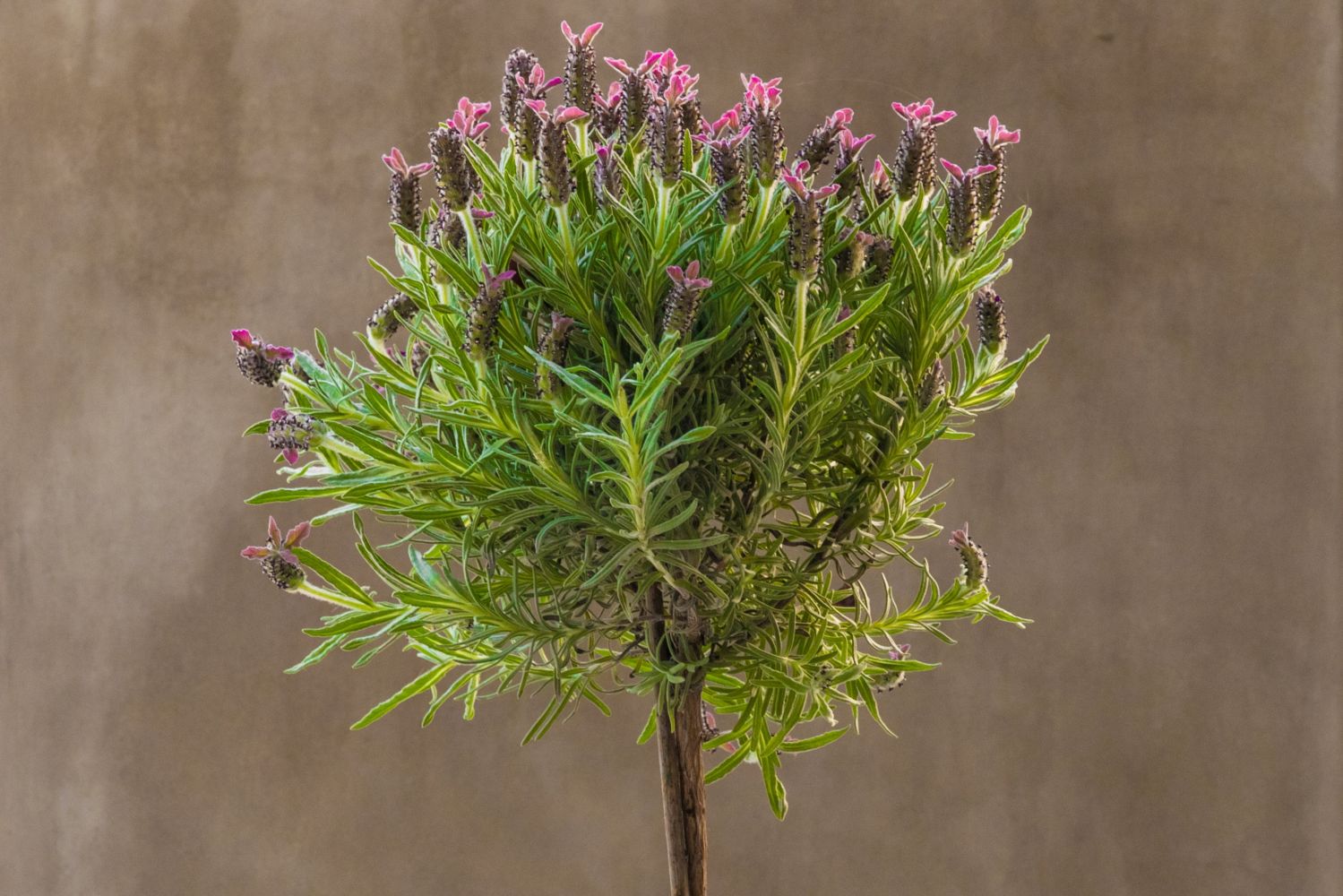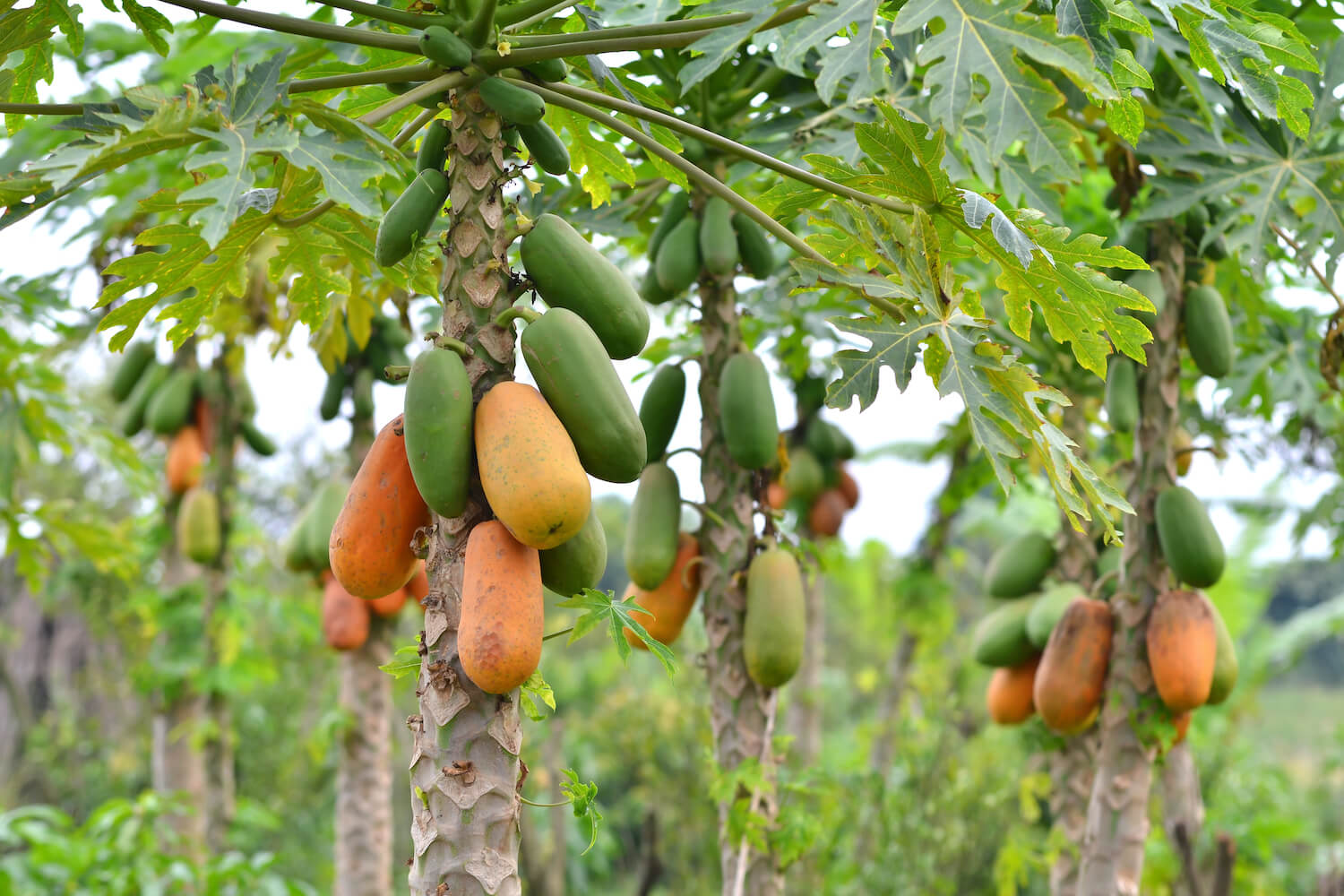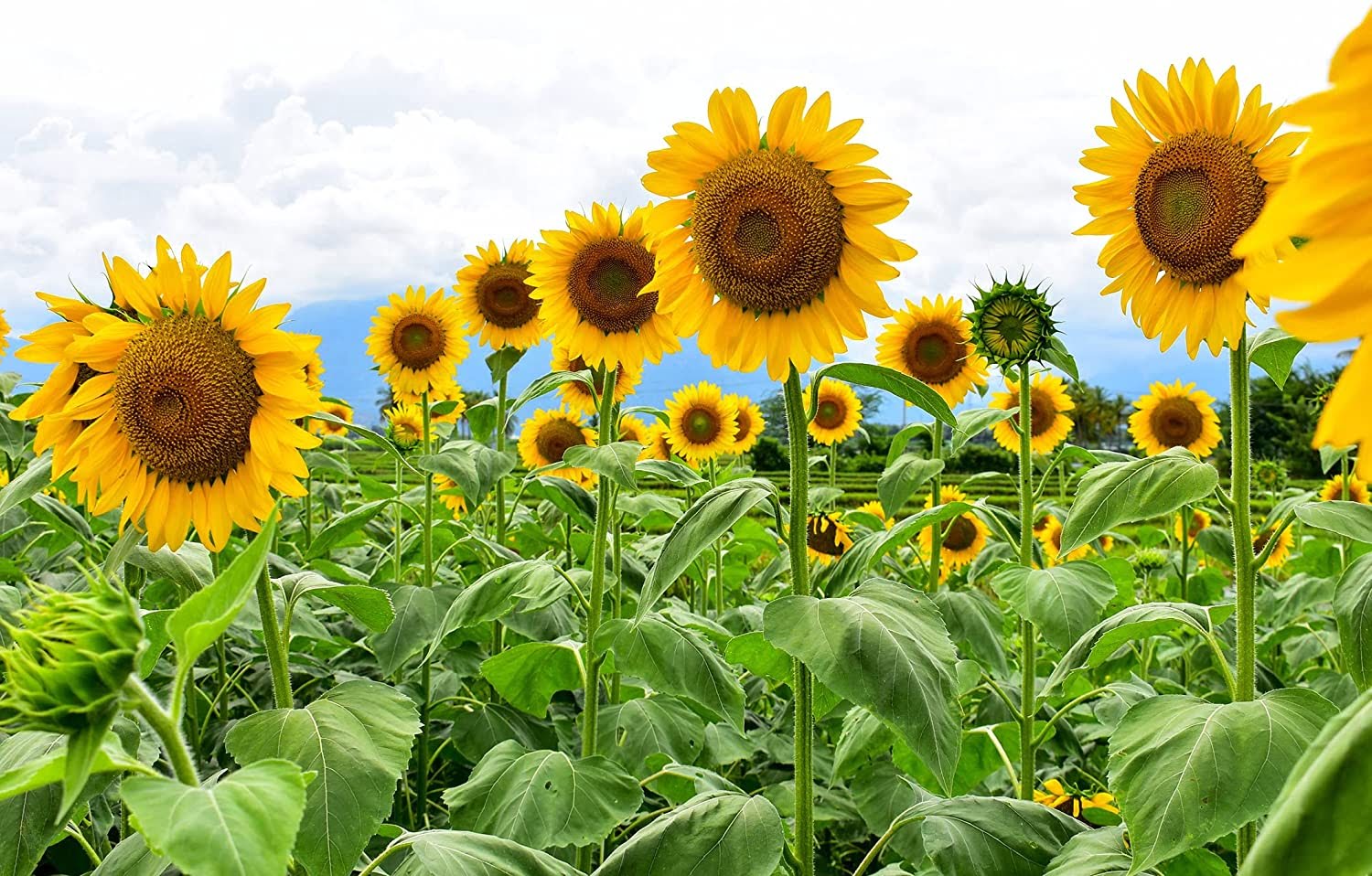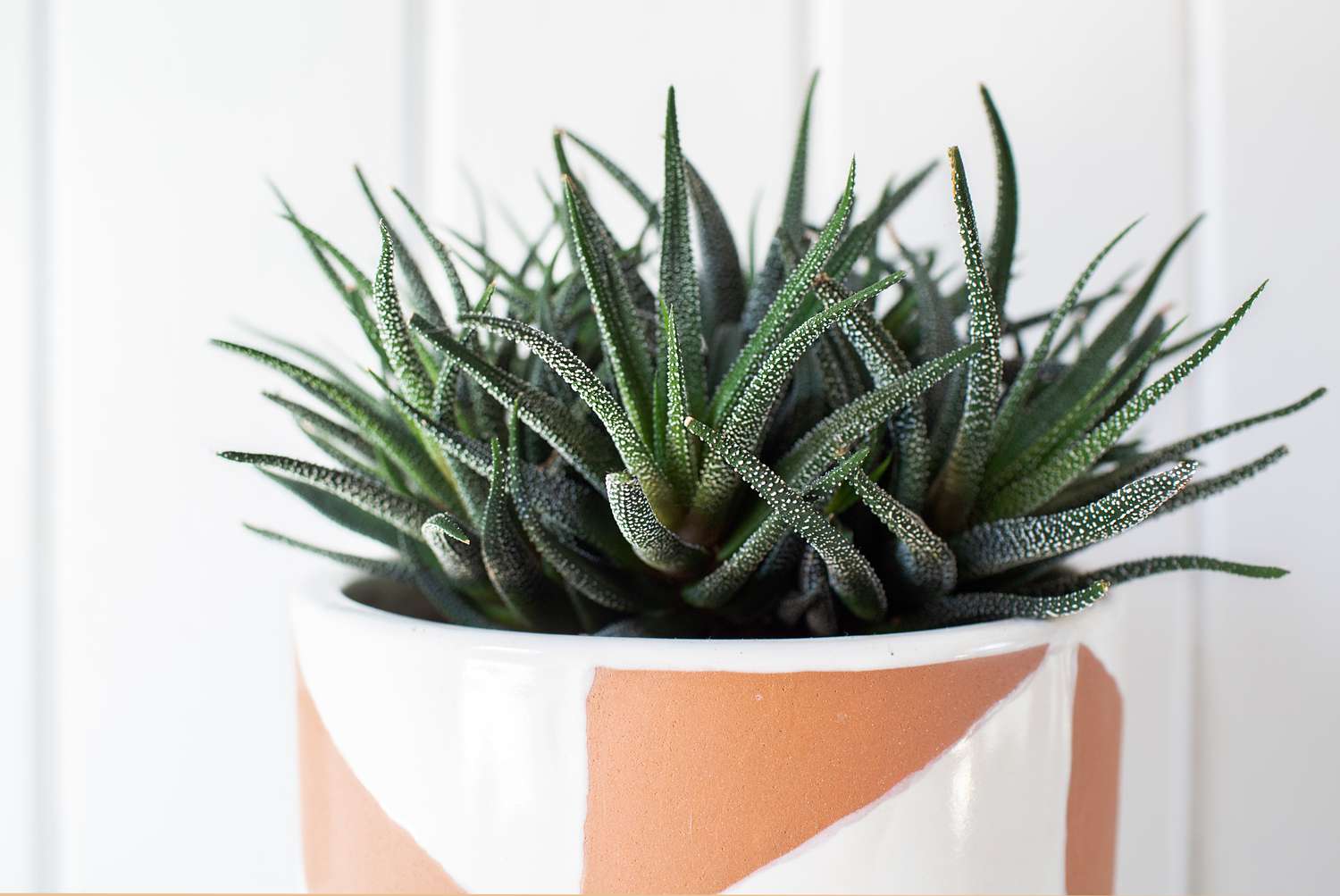Home>Types of Gardening>Edible Gardening>How Big Do Mango Trees Get


Edible Gardening
How Big Do Mango Trees Get
Published: October 29, 2023
Discover the ideal size of mango trees for your edible gardening needs. Learn about how big mango trees get and how to manage their growth.
(Many of the links in this article redirect to a specific reviewed product. Your purchase of these products through affiliate links helps to generate commission for Chicagolandgardening.com, at no extra cost. Learn more)
Table of Contents
Introduction
Welcome to the world of edible gardening, where you can grow your own fresh produce right in the comfort of your backyard. One of the most popular and rewarding fruit-bearing trees to cultivate is the mango tree. Mangoes are not only delicious but also packed with essential nutrients, making them a wonderful addition to any edible garden.
However, before you embark on your mango tree-growing journey, it is important to have a good understanding of how big these trees can get. This knowledge will help you plan the location and space requirements for your mango tree, ensuring optimal growth and a bountiful harvest.
Several factors, such as the variety of mango tree, growing conditions, and regular maintenance, can contribute to the size of a mature mango tree. By considering these factors and implementing appropriate measures, you can control the size of your tree and maximize its potential.
In this comprehensive guide, we will explore the various factors that affect mango tree size, discuss different varieties of mango trees and their sizes, highlight the ideal growing conditions for mango trees, provide tips for regular pruning and maintenance to control tree size, and address common problems associated with overgrown mango trees. So, let’s dive in and discover the fascinating world of mango tree cultivation!
Factors Affecting Mango Tree Size
There are several key factors that can influence the size of a mango tree. By understanding these factors, you can effectively manage the growth of your tree and ensure it remains an appropriate size for your garden or landscape.
1. Variety: Different varieties of mango trees have varying growth habits and sizes. Some varieties, such as the “Julie” or “Manila”, are known to be small or dwarf varieties, making them ideal for smaller spaces. On the other hand, varieties like the “Keitt” or “Tommy Atkins” tend to grow larger and taller. When selecting a mango tree, consider the available space and choose a variety that matches your desired tree size.
2. Rootstock: The rootstock on which a mango tree is grafted can also affect its final size. Certain rootstocks have the potential to limit the size of the tree, making them suitable for smaller gardens. Consult with a nursery or horticulturist to ensure you select the appropriate rootstock for your desired tree size.
3. Age: The age of the mango tree plays a role in its size. Younger trees will typically be smaller in stature, while older, more established trees have the potential to grow larger and taller. Keep in mind that it takes several years for a mango tree to reach its mature size, so be patient and provide the necessary care as it grows.
4. Pruning and Training: Regular pruning and training can significantly impact the size and shape of a mango tree. Pruning helps control the overall size by removing excess growth and maintaining the desired shape. Additionally, pruning can encourage the growth of lateral branches, resulting in a denser canopy and a more compact tree.
5. Climate and Growing Conditions: The climate and growing conditions in your area can also influence the size of a mango tree. Mango trees thrive in warm tropical or subtropical climates. In colder regions, where mango trees are grown in containers or greenhouses, the tree’s growth may be restricted due to limited space and temperature constraints.
By considering these factors and implementing appropriate measures, you can effectively manage and control the size of your mango tree. This will allow you to create a harmonious balance between the tree’s growth and the available space in your garden or landscape. So, let’s move on to explore the different varieties of mango trees and their sizes.
Varieties of Mango Trees and Their Sizes
Mango trees come in a variety of cultivars, each with its own unique characteristics, including size. Here are some common mango varieties and their typical sizes:
1. Dwarf or Small Varieties: These varieties are perfect for smaller gardens or container growing. They typically reach a maximum height of 6 to 10 feet (1.8 to 3 meters) and have a compact growth habit. Some popular dwarf or small mango varieties include “Julie,” “Manila,” and “Cogshall.”
2. Semi-Dwarf Varieties: Semi-dwarf mango trees are larger than dwarf varieties but still manageable for most home gardeners. They generally reach heights of 10 to 20 feet (3 to 6 meters) and offer a good balance between size and yield. Examples of semi-dwarf mango varieties include “Carrie,” “Nam Doc Mai,” and “Valencia Pride.”
3. Standard or Large Varieties: Standard mango trees are the largest in size, reaching heights of 30 to 45 feet (9 to 14 meters) or more. These tall and vigorous trees require ample space to accommodate their size. Some well-known standard mango varieties include “Keitt,” “Tommy Atkins,” and “Haden.”
It’s important to note that these size ranges are approximate and can vary based on environmental conditions and individual tree care. Furthermore, some mango varieties can be pruned and trained to fit into smaller spaces or maintained as smaller trees with regular maintenance.
When selecting a mango variety for your garden, consider the available space and the desired size of the tree at maturity. If you have limited space, it’s advisable to choose a dwarf or semi-dwarf variety. However, if you have a larger area or want a more substantial harvest, a standard or large variety may be a better choice.
Now that we’ve explored the different sizes of mango tree varieties, let’s move on to discover the optimal growing conditions for these trees.
Ideal Growing Conditions for Mango Trees
Mango trees thrive in warm tropical and subtropical climates, making them a popular choice for backyard gardens in these regions. To ensure the best growth and productivity for your mango tree, it’s important to provide the following ideal growing conditions:
1. Climate: Mango trees require a warm climate with temperatures between 70°F to 85°F (21°C to 29°C). They are sensitive to frost and cold temperatures, so it’s crucial to choose a location with a frost-free growing season.
2. Sunlight: Mango trees are tropical plants that require full sun exposure to thrive. They need a minimum of six to eight hours of direct sunlight each day. Choose a location in your garden that receives ample sunlight and is free from shade from nearby structures or trees.
3. Soil: Mango trees prefer well-draining soils that are rich in organic matter. They can tolerate a wide range of soil types, including sandy, loamy, or clay soils. However, avoid heavy and waterlogged soils that can cause root rot. Prior to planting, amend the soil with compost or organic matter to improve its fertility and drainage.
4. Watering: Mango trees have moderate water requirements. While they can tolerate short periods of drought, consistent and regular watering is crucial, especially during the flowering and fruiting seasons. Water deeply to encourage deep root growth, but avoid overwatering, as it can lead to root rot.
5. Fertilization: Mango trees benefit from regular fertilization to meet their nutrient needs. Apply a balanced fertilizer specifically formulated for fruit trees, following the recommended dosage on the package. Fertilize in early spring before new growth begins and again in summer to support fruit development.
6. Pruning and Training: Proper pruning and training techniques can help maintain the size and shape of your mango tree. Prune regularly to remove dead or diseased branches, improve airflow, and control size. Training young trees with proper pruning techniques can also promote a strong framework and shape the tree as desired.
By providing these ideal growing conditions, you will create an environment in which your mango tree can thrive and reach its full potential. Next, let’s explore the importance of regular pruning and maintenance in controlling the size of your mango tree.
Regular Pruning and Maintenance for Controlling Tree Size
Regular pruning and maintenance are essential for keeping your mango tree in check and controlling its size. Pruning not only helps manage the overall height and spread of the tree but also promotes healthier growth and increased fruit production. Here are some key tips for pruning and maintaining your mango tree:
1. Prune during the dormant season: The best time to prune your mango tree is during the dormant season, which is usually in late winter or early spring. Pruning during this time minimizes stress on the tree and reduces the risk of disease or pest infestation.
2. Remove dead and diseased branches: Start by removing any dead, damaged, or diseased branches. This helps improve the tree’s overall health and prevents the spread of diseases to other parts of the tree. Use clean, sharp pruning tools to make clean and precise cuts.
3. Thin out overcrowded branches: If your mango tree has too many branches or a dense canopy, thinning out the branches can improve airflow and sunlight penetration. This promotes better fruit development and reduces the risk of diseases, such as powdery mildew.
4. Shape the tree: Prune to shape the mango tree according to your desired size and form. Remove any branches that are crossing, rubbing, or growing in undesirable directions. Maintain an open and airy canopy structure to allow sunlight to reach all parts of the tree.
5. Manage the height: If you need to control the height of your mango tree, prune the uppermost branches to reduce its vertical growth. However, be cautious not to remove too much foliage, as leaves are crucial for the tree’s photosynthesis and overall health.
6. Regular maintenance: Besides pruning, regular maintenance practices like watering, fertilizing, and protecting the tree from pests and diseases are crucial for controlling the size of your mango tree. Avoid over-fertilization, as excessive growth can lead to a larger tree. Monitor for pests and diseases and take appropriate measures to prevent any issues.
Remember to use sterile pruning tools, such as pruning shears or loppers, to prevent the spread of diseases. Always sanitize your tools between cuts, especially if you are pruning diseased branches.
By consistently implementing these pruning and maintenance practices, you can effectively manage the size of your mango tree and promote its health and productivity. Now, let’s take a look at some common problems associated with overgrown mango trees and how to address them.
Common Problems with Overgrown Mango Trees
While mango trees are a joy to grow and harvest, they can present some challenges when they become overgrown. Here are some common problems associated with overgrown mango trees and how to address them:
1. Limited sunlight and airflow: Overgrown mango trees can develop a dense canopy that limits sunlight penetration and reduces airflow. This can lead to poor fruit development, increased susceptibility to diseases, and increased pest infestations. Pruning and thinning out the canopy can help alleviate these issues by allowing more sunlight and air circulation within the tree.
2. Difficult harvesting: When mango trees become too large, it can become challenging to reach the fruits for harvesting. This can result in fruit dropping prematurely or missed harvest opportunities. Regular pruning and size management can make it easier to access and harvest the fruits, ensuring you enjoy the fruits of your labor.
3. Nutrient imbalance: Overgrown mango trees may struggle with nutrient imbalances. The tree’s increased size requires more nutrients, and if not properly supplied, it can lead to deficiencies or excesses in essential elements. Monitoring the tree’s nutrient requirements and providing the appropriate fertilization can help maintain a healthy nutrient balance.
4. Disease and pest susceptibility: Overgrown trees are more likely to experience disease and pest issues. The dense foliage and limited airflow create a favorable environment for diseases, such as anthracnose or powdery mildew. Additionally, overgrown trees may attract more pests, such as mango fruit flies or mango seed weevils. Regular pruning allows for better disease and pest management by reducing their habitat and allowing for better monitoring and treatment.
5. Structural instability: An overgrown mango tree may develop an imbalanced canopy with heavy branches that can pose a risk of structural instability. This can lead to branches breaking or the entire tree toppling over during storms or high winds. Pruning and thinning out branches can help maintain a better-balanced tree structure and reduce the risk of such incidents.
By addressing these common problems with overgrown mango trees through regular pruning, size control, and proper maintenance, you can mitigate these issues and ensure the longevity and productivity of your mango tree. Now that we’ve covered the common problems, let’s wrap up our guide to growing mango trees.
Conclusion
Growing a mango tree in your edible garden can be a rewarding experience, providing you with delicious fruits and adding beauty to your landscape. Understanding the factors that affect mango tree size, along with the different varieties available, is crucial for proper planning and management. By selecting the appropriate variety and implementing regular pruning and maintenance practices, you can control the size of your mango tree and ensure it fits perfectly in your garden or landscape.
Factors such as variety, rootstock, age, and growing conditions all play a role in determining the size of a mango tree. Consider the available space in your garden and choose a variety that fits your desired tree size. Implementing regular pruning during the dormant season, removing dead and diseased branches, and shaping the canopy will help control the tree’s height and spread. Providing ideal growing conditions such as a warm climate, full sun exposure, well-draining soil, and regular watering and fertilization will support the tree’s overall health and productivity.
Overgrown mango trees can present various challenges, including limited sunlight and airflow, difficult harvesting, nutrient imbalances, increased disease and pest susceptibility, and structural instability. Addressing these issues through regular maintenance and size management will help mitigate problems and ensure a healthy and fruitful mango tree.
Remember, growing a mango tree requires patience and proper care. It may take several years for your tree to reach its full size and produce an abundant harvest. Enjoy the journey of nurturing your mango tree, and delight in the sweet rewards it will bring to your edible garden.

